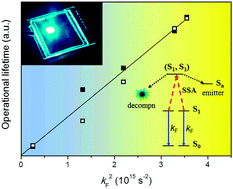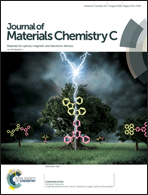A high fluorescence rate is key for stable blue organic light-emitting diodes†
Abstract
Singlet–singlet exciton annihilation (SSA) is found to be a critical factor for the decomposition of blue thermally activated delayed fluorescence (TADF) emitters in organic light-emitting diodes (OLEDs). Since radiative decay is a competitive process against bimolecular SSA, increasing the fluorescence rate (kF) of the blue TADF emitters can significantly prolong the device's operational lifetime by reducing the singlet exciton concentration at a given luminance level.



 Please wait while we load your content...
Please wait while we load your content...